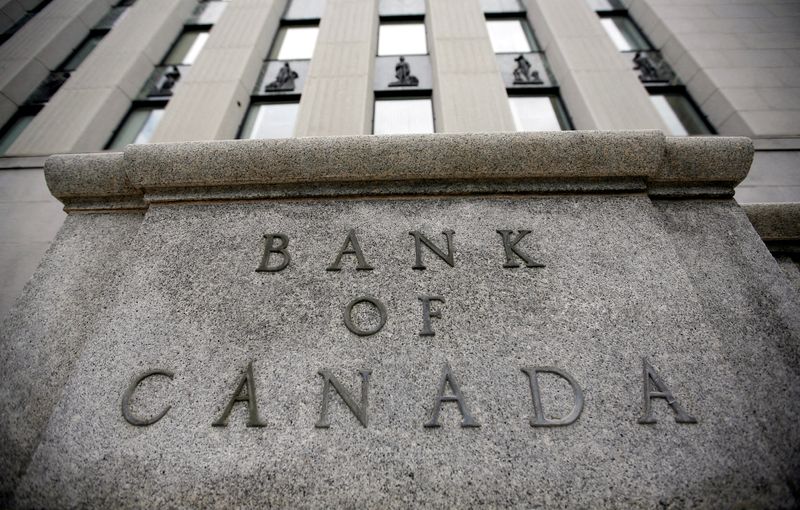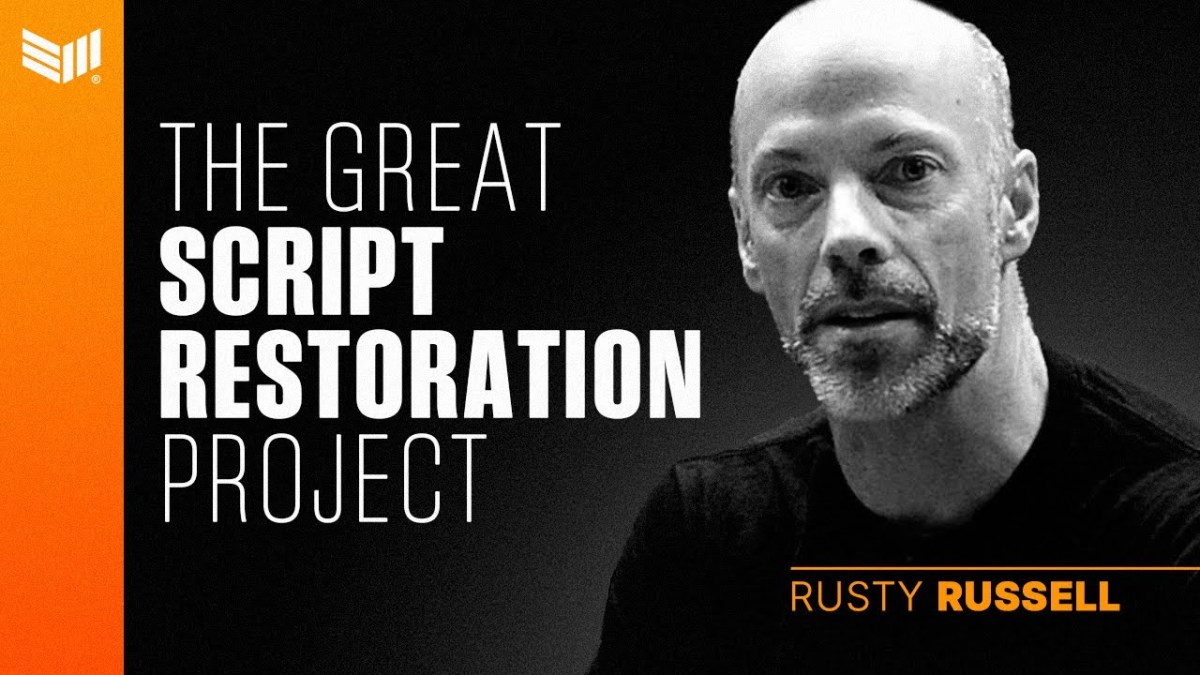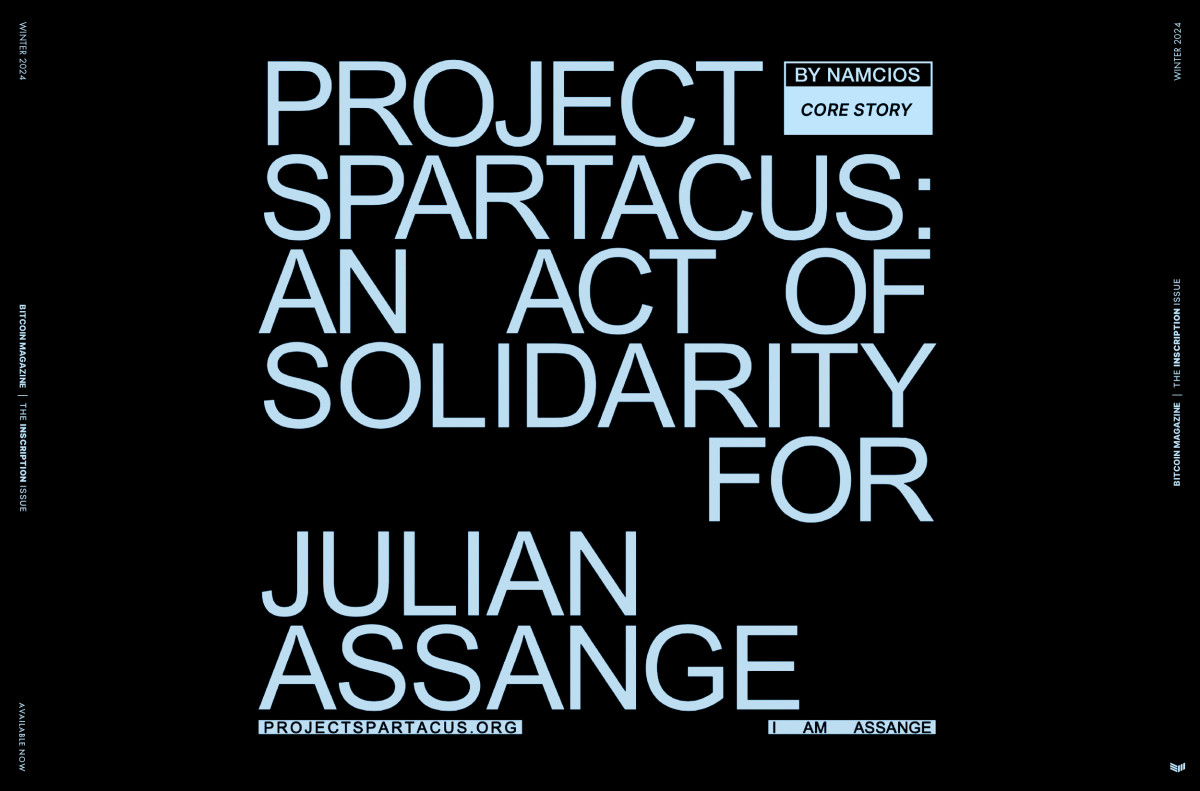Month: May 2024
Weaker loonie may not deter Bank of Canada diverging from the Fed
Post Content
Blockstream’s Rusty Russell Wants To Revamp Bitcoin Script
Rusty Russell, lead Lightning developer for Blockstream, is spearheading an ambitious initiative known as the Bitcoin script restoration project. This effort aims to restore and expand the functionality of Bitcoin’s script language, which was significantly limited in the early days of Bitcoin due to security concerns. In a recent interview with Bitcoin Magazine, Russell elaborated on the project’s goals and the potential it holds for the future of Bitcoin.
Rusty Russell and the Great Bitcoin Script Restoration Project (22:45)
A Look Back: Why OpCodes Were Disabled
When Bitcoin was first launched, its script language included a variety of operational codes (opcodes) that enabled complex programmable functions. However, many of these opcodes were disabled in 2010 due to severe security vulnerabilities. Satoshi Nakamoto, Bitcoin’s mysterious creator, made this decision to protect the network from potential denial-of-service attacks. This was a necessary move at the time, but it left Bitcoin’s script language much less capable than initially intended.
Rusty Russell recalls, “The house is burning down, you put the fire out, but then you rebuilt, right? And we never got that second stage.”
The Restoration Project: Bringing Back the Power
The Bitcoin script restoration project seeks to re-enable these disabled opcodes with proper safeguards in place. The goal is to bring back the powerful features of Bitcoin’s script language while ensuring the network remains secure. Here’s what the project aims to achieve:
Handling Arbitrary Numbers: Restoring the ability to work with arbitrary numbers will allow more complex transactions and conditions, making Bitcoin more versatile.Enabling Introspection: This means giving scripts the ability to examine and verify transaction details directly, which can enhance security and functionality.Improving Self-Sovereignty and Privacy: By expanding the script language, users will have more control over their transactions and enhanced privacy features.
In the interview, Russell highlighted the importance of these features, saying, “We want that, right? We literally lost the ability to multiply or divide. I think there is, among people who are developing on top of Bitcoin, there’s an amazing hunger for this. They’re like, yes, can we have it all back?”
Why This Matters
Re-enabling these opcodes isn’t just about restoring lost functionality; it’s about unlocking new possibilities for Bitcoin. With a more powerful script language, developers can create innovative applications directly on the Bitcoin network. This can lead to more advanced financial products, enhanced privacy tools, and much more.
Rusty Russell expressed his optimism during the interview, “My whole life has been building stuff for other developers to do things on. So I have a huge amount of faith in open ecosystems and their ability to innovate. And the things that will get built on top of a solid base are amazing.”
Ensuring Security
One of the primary concerns in this restoration project is maintaining the security of the Bitcoin network. The project aims to introduce these powerful features with limits that prevent potential abuse. This ensures that while Bitcoin becomes more capable, it doesn’t become vulnerable to the same issues that caused these features to be disabled in the first place.
Looking Forward
The Bitcoin script restoration project is a crucial step toward realizing the full potential of Bitcoin as a programmable money system. By addressing past security concerns and reintroducing powerful features with appropriate limits, the project aims to create a scalable, secure, and innovative ecosystem for Bitcoin.
As Rusty Russell put it in his interview, “Let’s restore script to what it was supposed to be originally. And we think we have a way of doing that that’s clean and neat and safe.”
This project not only looks to the past to recover lost functionalities but also paves the way for future innovations, ensuring Bitcoin continues to evolve and meet the needs of its users.
Project Spartacus: An Act of Solidarity For Julian Assange
This article is featured in Bitcoin Magazine’s “The Inscription Issue”. Click here to get your Annual Bitcoin Magazine Subscription.
Bitcoin has for most of its lifetime been seen as a monetary network, whereby users can send and receive the native token BTC. Given the tremendous price appreciation since its inception in 2009, the monetary good also became a store of value — a means through which someone could store their valuable work hours so as to not have them debased and instead experience an increase of purchasing power rather than a loss.
Not all users are alike, however. Despite the popularity of these monetary narratives, some outcasts have used Bitcoin for all kinds of purposes throughout time. Most notably, Julian Assange, a now-famous journalist and political prisoner, creator of WikiLeaks, used Bitcoin for different reasons, including as a proof-of-life mechanism and a verifiable proof-of-publishing. To Assange, Bitcoin was and still is much more than a distributed monetary system that solves the double-spending problem inherent in digital cash. For the journalist, Bitcoin can serve as much more, and while he battles for his life, others have joined him in that mission.
Now, before diving into the intricacies of what Bitcoin is and can be to Assange and his supporters, let’s take a step back and see what the journalist has done with this digital coin since the first time his NGO embraced bitcoin.
In 2010, shortly after the publishing of U.S. diplomatic cables by WikiLeaks in the infamous Chelsea Manning leaks, Assange’s organization was cut from the global banking system as Bank of America, Visa, Mastercard, and PayPal stopped serving the online platform. That reality led Assange to adopt bitcoin, and in June 2011 WikiLeak’s Twitter account announced they would start accepting bitcoin donations.
Interestingly, WikiLeaks voiced interest in adopting bitcoin much earlier than June 2011, and according to posts in then-popular forum BitcoinTalk, Satoshi discouraged Assange from pursuing that route in December 2010. Their reason? “Bitcoin is a small beta community in its infancy. You would not stand to get more than pocket change, and the heat you would bring would likely destroy us at this stage.” WikiLeaks patiently waited another six months before accepting bitcoin.
Ironically, Assange would later praise the U.S. government for allegedly issuing this coordinated attack, which of course led to WikiLeak’s embrace of bitcoin and subsequently resulted in a capital appreciation in dollar terms of over a thousand percent. It is both interesting and comical that the fact WikiLeaks got locked out of the mainstream financial system for simply publishing leaked documents would lead them to a much better financial situation — one in which they didn’t need to ask permission and could enjoy great monetary gains in dollar terms. Poetic.
In September 2014, Assange would start hinting at the other possible use cases he saw for Bitcoin, which, given his tone and delivery, leads one to believe he was much more passionate about that than financial speculation — however large the gains could be with the monetary use case:
“Bitcoin is an extremely important innovation, but not in the way most people think. Bitcoin’s real innovation is a globally verifiable proof of publishing at a certain time. The whole system is built on that concept and many other systems can also be built on it. The blockchain nails down history, breaking Orwell’s dictum of ‘He who controls the present controls the past and he who controls the past controls the future’.”
A couple of years later, the use of Bitcoin as a timestamping server for WikiLeaks documents began to emerge, albeit it wasn’t clear if it was WikiLeaks itself doing the timestamps or grassroots activists. A Reddit user posted on r/WikiLeaks that someone had timestamped the hashes of some WikiLeaks torrent files, likely using OpenTimestamps — an open source tool created by Bitcoin developer Peter Todd for this purpose.
Gabriel Shipton, film producer and Assange’s brother, talked with Bitcoin Magazine about the early days of his brother’s interactions with bitcoin:
“Julian recognized in 2011 the power of bitcoin to build ‘an intellectual scaffold’ for civilization, a protocol that would allow any reference to human intellectual contributions to be independently verified, without relying on any organization. Bitcoin so greatly excited him not only due to it being the most censorship-resistant manner of publishing possible, but also of what it offered: The ability to construct a great wonder of knowledge, a crucial tool in humanity’s struggle against ignorance.”
Assange’s thought process on Bitcoin use cases is meaningful not only because they shed light on a totally novel use for the decentralized network, but also because of how early they were uttered. Assange saw this potential over a decade ago, but it wouldn’t be until the release of Ordinals that this use case would be popularized in a meaningful way.
Ordinals, launched on Bitcoin mainnet at the start of 2023, allows anyone to effortlessly add arbitrary data to a Bitcoin block at any given moment. Once that data is added, it inherits Bitcoin’s immutability and security, and can achieve Assange’s vision of a verifiable proof-of-publishing at that moment. Inscriptions go even further. In addition to just housing a timestamp enabling proof-of-publishing, which users attempted with torrent tracker files as early as 2016, Ordinals enables the direct publishing of the data itself on Bitcoin. Not only is there an immutable record of the time and date in block height terms, there is now also the possibility to publish the actual contents of the article or torrent link itself. A new era of blockspace usage for Bitcoin.
Naturally, we’ve seen the launch of this new protocol bring about a whole slew of JPEGs being published in blocks. In the early days, some were just random memes, but not long after its release, inscribers started getting sophisticated, developing recursion techniques, and even teleburning Ethereum-based NFT collections. Now, nearly a full year later, Ordinals have spun an entirely new ecosystem in Bitcoin, enabling all different kinds of artistic and software developments to occur on the “mother chain”.
However, some projects began to emerge that try to cater to Assange’s vision from way back in 2014. These projects vary in shape, size, and form, but all seem to seek Bitcoin and the possibilities brought about by Ordinals to actually do something more than speculate on the images and videos published on Bitcoin.
Most notably, a project emerged in October 2023 that sought to enable anyone in the world to add to Bitcoin the cables published in the leaks that originally locked WikiLeaks out of the global financial system back in 2010. Thanks to Ordinals, this project was able to allow not only the timestamping of the cables, but the actual inscribing and storing of the unadulterated content itself. Project Spartacus turned Bitcoin into a sort of Library of Alexandria — one that cannot be altered or destroyed, no matter how powerful the adversary.
In this case, the leaks expose war crimes by the United States military and government, and expose facts that stand in stark contrast to the main narratives pushed by the media and the government itself about what was happening on the ground in the Iraq and Afghanistan wars.
Thirteen years after those cables turned a journalist into a political prisoner, this grassroots project emerged to stand in solidarity with Assange and claim, “I am Assange”. Alluding to the famous “I am Spartacus” scene in the 1960 movie Spartacus, Project Spartacus invites Bitcoin users from all over the world to say “I am Assange” and inscribe into Bitcoin those cables that kickstarted everything.
Project Spartacus aims to take a stand toward freedom of information and knowledge, making it impossible for anyone to mess with the data that Assange risked his life to make public. The journalist currently faces potential extradition to the U.S., despite being an Australian citizen and not having committed the alleged offenses on U.S. soil. The outcome of the extradition process remains uncertain, and concerns continue to grow regarding his future and whether he will ever regain his freedom.
Click the image above to subscribe!
Project Spartacus’ website provides a public interface through which any person can “inscribe” –– Ordinals jargon for adding data to Bitcoin –– a war log. There seem to be no fees associated with this action apart from network fees, a necessary component to any transaction submitted to the Bitcoin network. The page also features a “donate” button, which opens up a panel through which users can optionally send bitcoin to Assange’s cause. Donations are said to go toward supporting the following organizations: Freedom of the Press Foundation, The Information Rights Project, and Reporters Without Borders.
Bitcoin Magazine spoke with the anonymous creators of the technology behind Project Spartacus, who shed some light on the process and mission:
“Each war log a user inscribes through Project Spartacus is a file containing the original content from one of the 76,911 Afghan War Diary logs. We chose the Ordinals protocol for its widespread adoption, even in its infancy, as a standard for immutable data storage, and simply because we believe Bitcoin is the most immutable and uncensorable technology for this use case. As each log is inscribed, its data is embedded into Bitcoin to be propagated and easily found by any of the many Bitcoin and Ordinals clients. We see this use case for Bitcoin to be critical for human rights and freedom, and we hope that you will stand with Julian Assange by storing this sensitive data on Bitcoin with us.”
Upon navigating to the website, the user finds a huge rectangular button on the main page, reading “Publish War Log”. Upon clicking, the process of inscribing a war log is triggered. The user is given the option to choose how many logs to inscribe, with a maximum of 300 war logs per transaction. The user can then select the transaction fee, based on which a total amount for payment is calculated. Upon hitting “continue”, the user is then presumably redirected for payment.
The creators of Project Spartacus gave the files a graphical treatment by choosing SVG files, which still contain the raw log data as a comment field, while giving the user a way to easily view the information. The project takes a spin on Ordinals’ popular use case of digital artifacts to focus on complete data finality on a decentralized chain of information, run by tens of thousands of nodes in hundreds of different jurisdictions around the world.
In this sense, as Assange once envisioned, Bitcoin has indeed become more than just a financial asset — it is now a beacon of hope for those fighting against the suppression of truth and the distortion of history.
This article is featured in Bitcoin Magazine’s “The Inscription Issue”. Click here to get your Annual Bitcoin Magazine Subscription.
$5.1 Billion Pension Fund CIO Joins Non-profit Organization Focused on Bitcoin Adoption
Today, the Proof of Workforce Foundation, a 501(c)(4) tax-exempt nonprofit organization, has announced the addition of two distinguished members to its Board of Directors: Ajit Singh and Raphael Zagury, according to a press release sent to Bitcoin Magazine. This duo is being brought on to further strengthen the Foundation’s mission to promote meaningful, education-based Bitcoin adoption among workforce organizations.
Ajit Singh joins the board from his current role as Chief Investment Officer of the Houston Firefighters Relief and Retirement Fund, a $5.1 billion pension fund and the first in the U.S. to add Bitcoin directly to its balance sheet in 2021. Singh has also served as the Chief Risk Officer and Deputy CIO for the United Nations Joint Staff Pension Fund (UNJSPF), managing a global pension fund with approximately 144,000 participants across 25 UN member organizations.
“As institutions continue to learn about Bitcoin, I’m excited to bring my experience to the Proof of Workforce Nonprofit Board of Directors,” Singh stated. “Bitcoin was created for everyday workers, with its greatest attributes discovered through meaningful learning. Proof of Workforce is well-equipped as a reliable resource for any organization, institution, state or city, in pursuit of a strong and healthy workforce.”
Raphael Zagury, the Chief Investment Officer and Head of Research at Swan Bitcoin, also joins the board. Zagury is known for creating The Nakamoto Portfolio, an open-source software tool that demonstrates Bitcoin’s impact on fund portfolios. His extensive background includes co-founding Open Co, a leading Brazilian fintech, and holding executive roles at Goldman Sachs, Deutsche Bank, and Merrill Lynch in New York.
“This dynamic addition to our Board of Directors positions us as a high-level, global resource for any pension fund, labor union, workforce organization or government body interested in meaningful, education-based, Bitcoin adoption,” stated Proof of Workforce Founder and President, Dom Bei. “Ajit and Rapha join us with an overwhelming abundance of experience in both Bitcoin and traditional finance. From Ajit’s work in 2021, as the first CIO of a U.S. Pension to introduce Bitcoin directly into it’s portfolio, to Raphael’s creation of the first open-source portfolio analytics tool for Bitcoin on the balance sheet, our board’s experience in Bitcoin firsts has been broadly deepened.”
Proof of Workforce has already made significant strides in promoting Bitcoin adoption. The Foundation played a pivotal role in helping the Vacaville Firefighters become the second union in the U.S. to purchase and hold Bitcoin on its balance sheet, and helped the Humboldt Bay Firefighters become the third union to do so. And internationally, the Foundation assisted the Salvadoran firefighters association, AproBomberos, in also holding Bitcoin on their balance sheet.
JUST IN: 🇸🇻 Salvadoran firefighters association AproBomberos now officially holds #Bitcoin on their balance sheet 👏 pic.twitter.com/4kiORBRbf1
— Bitcoin Magazine (@BitcoinMagazine) February 24, 2024
The Foundation’s board, which includes prominent Bitcoiners Joe Carlasare, Lisa Hough, Chris Alaimo, and Magdalena Gronowska, boasts diverse expertise in law, energy, multimedia, and mining. Additionally, the Foundation announced that Josh and Dan of Blue Collar Bitcoin will be stepping down from the board, but will remain involved with the organization, and thanked them for their leadership and support while at the Foundation.
Proof of Workforce Foundation says it provides all services at no cost. More information about the organization can be found on their website here.
$1.5T Morgan Stanley is Buying US Spot Bitcoin ETF
Recent 13F SEC filings have revealed several major US financial institutions are allocating serious money to Bitcoin via spot ETFs, with these filings disclosing the holdings of institutional investors with over $100 million allocated.
After the SEC approved several spot Bitcoin ETFs earlier this year, investors have eagerly awaited these disclosures. The filings reveal names like the State of Wisconsin Investment Board, Wells Fargo, JPMorgan and others.
Now, the latest disclosure shows mammoth financial services firm Morgan Stanley has bought $269.9 million worth of Grayscale’s GBTC. This makes Morgan Stanley one of the largest institutional holders of GBTC, besides Susquehanna’s $1.8 billion position.
NEW: $1.5 Trillion Morgan Stanley reveals it has spot #Bitcoin ETF exposure in SEC filings 👀 pic.twitter.com/tRAznuHHRF
— Bitcoin Magazine (@BitcoinMagazine) May 17, 2024
With over $1.5 trillion in assets under management, this allocation signals the Wall Street titan’s growing conviction in bitcoin’s role in portfolios.
It joins other major banks like JP Morgan, BNP Paribas, and Royal Bank of Canada that have disclosed spot Bitcoin ETF purchases.
Despite some firms like Vanguard opposing Bitcoin, the broader shift has been toward embracing Bitcoin exposure. Clients are demanding access to Bitcoin’s growth prospects as both an inflation hedge and an alternative asset class.
Click the image to learn more.
Old guard banks steadily allocating to Bitcoin ETFs represents a monumental change. Morgan Stanley’s purchase follows execs speaking positively about Bitcoin’s potential. Though still a small portion of AUM, it indicates legacy finance sees bitcoin’s value.
As major traditional institutions warm up to Bitcoin, accessible ETFs have enabled dipping their toes in. The Q1 disclosures provide tangible evidence these giants are acting on growing conviction in bitcoin’s staying power.
Dollar selling “looks exaggerated” – HSBC
Post Content
Dollar steadies, but on track for sharp weekly loss
Post Content
Dollar decline pauses, markets eye April core PCE data
Post Content
ING anticipates EUR/GBP rise as BoE rate cut bets increase
Post Content
Asia FX weakens as dollar recovers amid waning rate cut cheer
Post Content







